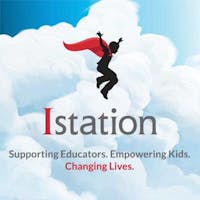I began teaching many moons ago. (Think rotary phones and getting up off the couch to change the channel on TV.) But even back then, I did everything I could to provide differentiated instruction to my students. For example, I broke them up into small groups. And I provided individualized support and coaching.
The approaches I used didn’t have fancy names; I was just determined to help students grow, whatever it took. It wasn’t easy. The struggle to differentiate was real!
And it still is, even with today’s Response to Intervention/MTSS frameworks. (Note the fancy name.) These models work much like I used to, by creating individualized learning paths for students. With technology as an additional tool, differentiation is more seamless than ever. So let’s take a close look at a successful implementation of an RTI framework.
What is RTI?
Response to Intervention (RTI) is a multi-tiered approach to early identification and support of students with learning and behavior needs.
It is appropriate for a vast array of students, from those with slight learning differences to those in need of intense intervention. RTI is designed for use when making instructional decisions in both general education and special education.
Decisions can touch on anything from determining appropriate homework assignments, to forming small groups, to altering a student’s class schedule in order to provide more instructional time for a specific skill or concept. By using data to identify students at risk for poor learning outcomes, RTI allows educators to create a well-integrated system of instruction and intervention based on student performance.
A Three-Tiered Approach
In general, RTI is a three tiered process that begins with high-quality instruction and universal screening of all students in the general education classroom.
Struggling learners are identified and placed in the second tier where progress is consistently monitored, and data is analyzed to determine the intensity and frequency with which interventions should be delivered. Students in the third tier receive the most intensive and frequent interventions, ranging from supplemental instruction in a small-group setting, to a one-on-one session with a teacher or coach providing focused, targeted support.
Now let’s take a closer look at what happens in each tier for students and instruction alike:
Tier 1: Universal Screening and Core Classroom Instruction
- All students receive high-quality, scientifically based differentiated instruction and are screened to determine an academic baseline and identify struggling learners. This might include, for example, literacy instruction that focuses on the five key areas of effective reading instruction (phonemic awareness, phonics, fluency, vocabulary, and comprehension).
- Students receive periodic progress monitoring through traditional paper-based quizzes or tests.
- Students who are not showing adequate progress are moved to Tier 2.
Tier 2: Targeted Supplemental Interventions and Supports
- Students are provided instruction that is more focused and targeted in addition to being aligned with core academic instruction. For example, formative assessments might identify three students struggling with letter knowledge, and four other students falling behind in vocabulary skills. Those students are grouped based on their specific skill deficiency.
- Skill-specific interventions are delivered by teachers or coaches to those small groups as well as via instruction in the general curriculum. The small groups typically range from two to five students, but size varies depending on need and classroom personnel. The intensity, frequency and duration of the interventions might also vary.
- Progress monitoring usually occurs monthly or as determined by the campus, school district, or state requirements.
- Students who do not show enough progress at this level may then be considered for more intensive interventions as part of Tier 3.
Tier 3: Intensive Interventions and Supports
- Students are provided the most intensive instruction, which typically means one-on-one intervention.
- Progress monitoring usually occurs every two weeks or as determined by campus, district, or state requirements.
- Students who do not achieve the desired level of progress may be referred for a comprehensive evaluation and may possibly be eligible for special education services under the Individuals with Disabilities Education Improvement Act of 2004 (IDEA 2004).
The “Aha” Moments
I first taught in an affluent area on the west coast. Children were exposed to the finer things in life and had endless access to the best of everything. But we all knew that didn’t mean there wouldn't be struggles.
Once I began small group and one-on-one intervention with kids who weren’t meeting expectations, I realized most of those students weren’t really struggling. The problem was that no one had ever challenged them or held them accountable.
Assessments had pinpointed skill deficiencies, but interventions allowed me to uncover that the real issue was motivation. The students had the knowledge; they just weren’t applying themselves. When I began administering a little tough love during these small group and one-on-one interventions, the “aha” moments began. I could see light bulbs going off—my students actually “got it”. Those were the most rewarding experiences of my teaching career.
I’ve left the classroom but I’m still in the world of education, offering professional development to educators. The work that is being done now to layer and scaffold instruction is more exciting every day.
I may be old enough to remember a day when the words “Response to Intervention” had not yet been uttered, at a time when I certainly didn’t have the kind of supporting technology now available to educators. But with age and experience come perspective. I realize the true value of the tools teachers have to help them provide individualized learning paths to students. Better yet, I know the words to all the songs from the 80’s.
Want to learn more? Get the free e-book How to Build an RTI Framework.



